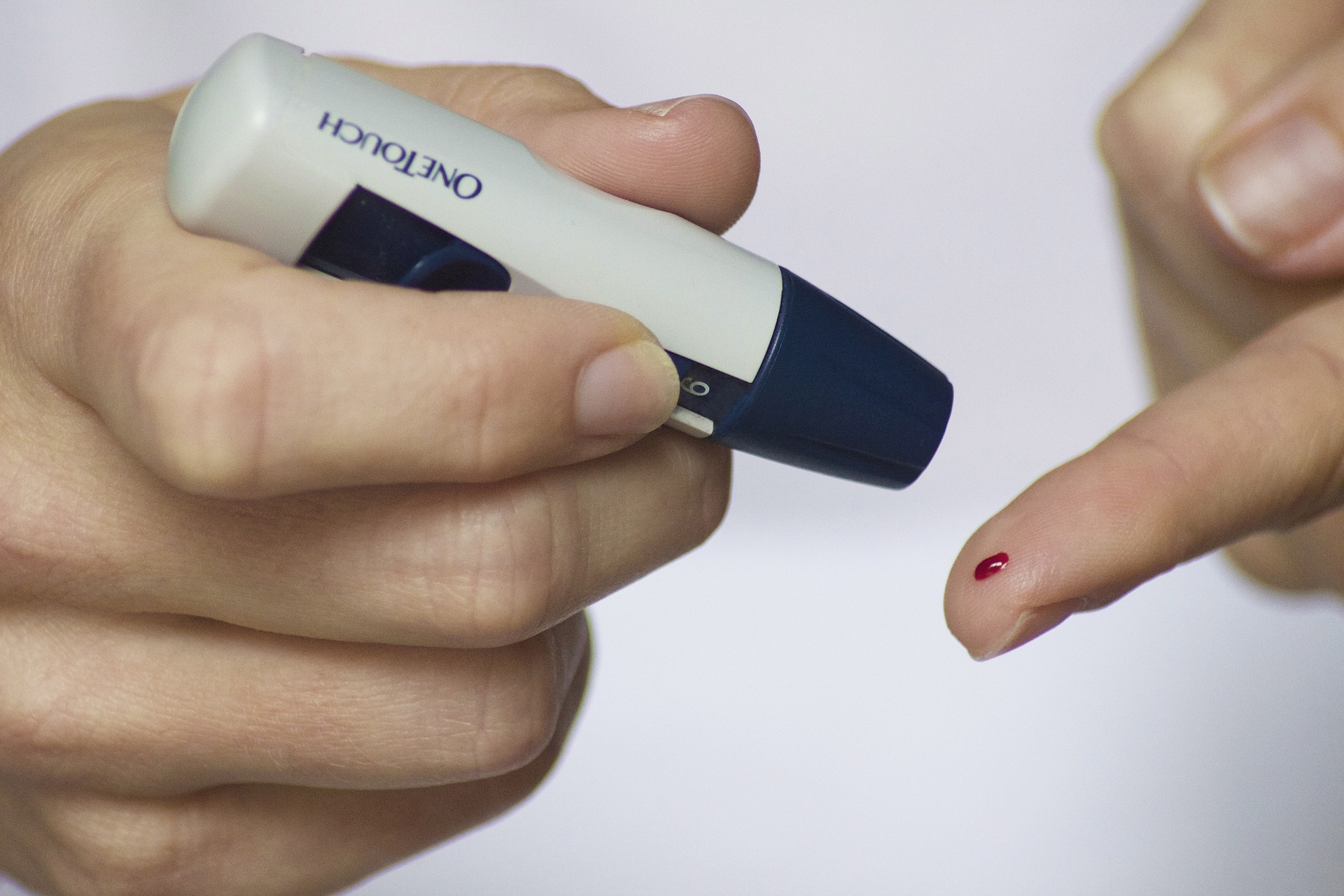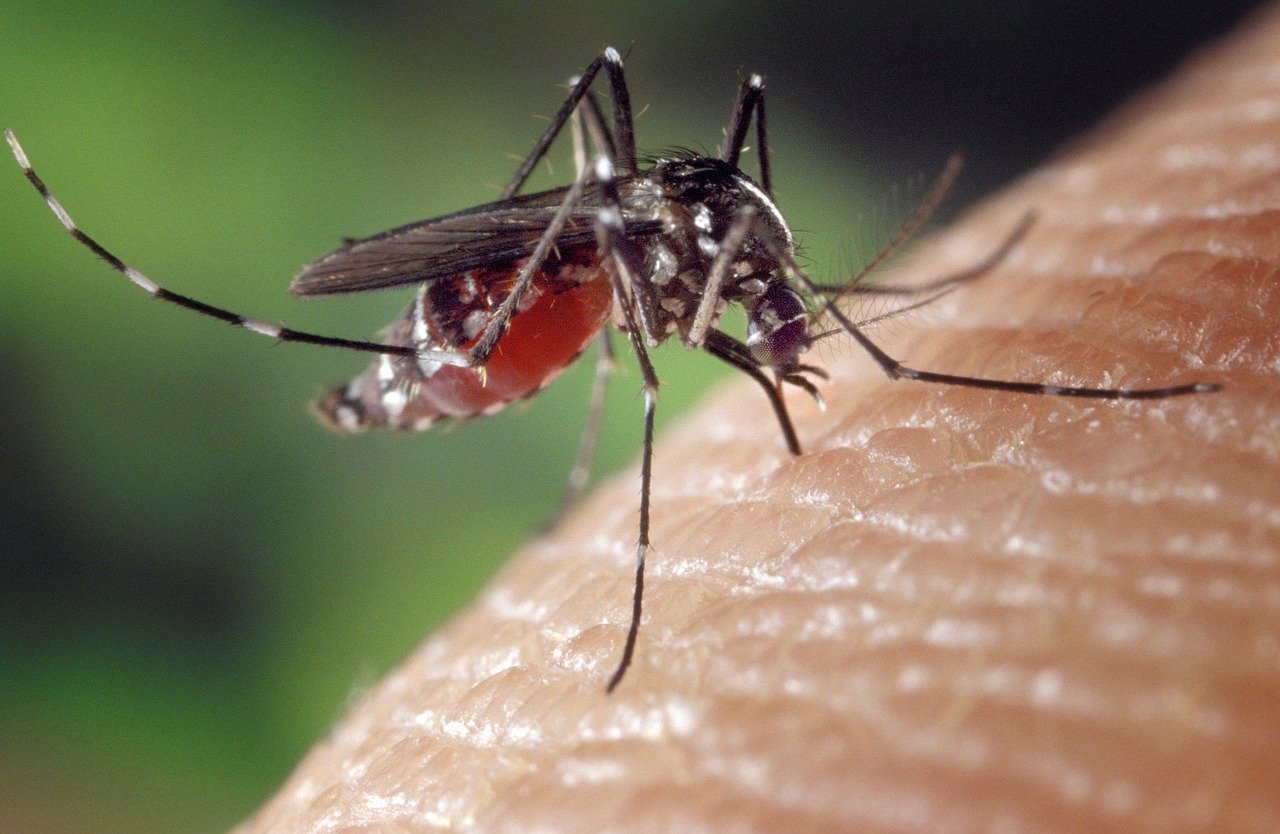
Malaria diagnostic methods – less is more?
In the last years, the use of Rapid Diagnostic Tests (RDTs) has increased a lot for acute diagnosis, especially in sub-Saharan Africa. There, 75 % of malaria tests have been carried out with RDTs in 2017 [1].
The RDTs are based on the reaction with specific parasitic antigens. There are several RDTs on the market which vary according to specificity. For the test, blood from a finger prick is taken and introduced to the RDT card. The result is shown in form of bands on the test card window within a 15 to 30 minutes [1,2].
RDTs have several advantages:
They are very easy to perform and many RDTs can be carried out at a time. The result is easy to interpret and rapid. Depending on the RDT type [8], they detect the presence of parasitemia with different levels of sensitivity, detect a single species, distinct between a few species or distinct even between all Plasmodium species. The training for RDT performing is minimal [7] which makes possible diagnosis even at the community level.
Nonetheless, there are also disadvantages:
RDTs have a low specificity, this again depends on the RDT type, of which there are more than 200 different types on the market. They vary according to quality and price. RDTs are relatively high in cost [2]. Unfortunately, they don’t provide any information on quantity of parasites.
Furthermore, false negative results due to low number of parasites (low sensitivity) and false negative results due to genetic mutations [3] frequently occur.
So, there are two sides of the coin. As an RDT only reacts to the presence of parasitemia in the patients’ blood, and due to the possibility of false negative results, negative results are not reliable and have to be confirmed by microscopy [2].
Also, the gravity of the parasitemia cannot be assessed without any quantification given.
Not to forget, they have to be kept in a cool chain as high humidity and temperatures can affect quality of performing.
RDTs are a useful alternative, though, when microscopy services are not available or reliable. Unfortunately, this often is the case in malaria-endemic regions [8].
According to the WHO, RDTs “have the potential to greatly improve the quality of management of malaria infections[1]. To make that possible, the WHO has listed issues for “minimum performance requirement” [1] and for „successful incorporation of RDTs into malaria control” [3].
Of course, there are more methods for malaria detection, apart from the light microscope and the RDTs. Nevertheless, these are not that suitable for routine diagnosis. A few of them are PCR, malaria antibody detection and the QBC technique.
Polymerase chain reaction (PCR) shows several qualities:
It is the most specific and most sensitive method which multiplies parasitic DNA even at very low number of parasites [1,2]. PCR is also useful for mixed infections, and results are very reliable. Realtime PCR also gives exact information on quantification [3]. The automated process of PCR allows diagnosis of large number of samples at a time [2].
The following conditions of PCR are unfavorable for routine diagnosis:
The method takes many hours and is very expensive [3]. The methodologies are complex and require a well-trained staff [2]. The mentioned qualities of a PCR are outstanding. Unfortunately, PCR is not a suitable method for routine diagnosis, especially not in poorer endemic regions.
It is a more common method in research studies and forensic examination.
For QBC technique (Quantitative Buffy Coat) the patients’ blood is collected in a micro-hematocrit tube. These contain different fluorescent dyes, which allow detection of parasites DNA and leukocyte DNA under the epi-fluorescent microscope [2].
Advantages of QBC technique are as follows:
It provides rapid and reliable results and is simple to carry out. Moreover, it is a sensitive method for the detection of P. falciparum and for low parasitemia.
However, QBC has got disadvantages, too:
It requires specialized instrumentation and is more costly than light microscopy. Detection for other species than P. falciparum is unspecific, and quantification of parasites is poor. It’s obvious that the QBC technique is a method for simplified detection of malaria parasites. Still, there are not unimportant deficits with regard to quantification and specificity. These factors, however, are decisive for assessment of gravity and for treatment prescription.
Another way of malaria diagnosis is the Immunofluorescence antibody testing (IFA).
This method detects malaria indirectly by using Plasmodium species-specific or crude antigens, which are already prepared on a slide. When there are antibodies in the blood sample of the patient, they bind to the antigens on the slide specifically and can be examined under the fluorescent microscope [3]. The qualities of this method are given by a high sensitivity, high specificity and high reliability.
IFA, also, is accompanied by disadvantages:
As the process is time consuming and not automated, the number of sample examination is being limited. The method requires fluorescent microscopy and well-trained staff.
As the target of this method are the human antibodies, results at initial stages of Malaria will only be negative. Consequently, it cannot be considered a method for diagnosis at early stage of infection. Neither can it provide information on the presence of parasites to the time of testing, as antibodies remain in the blood up to 3-6 months after elimination of parasites [3].
The above-mentioned methods, despite of providing good qualities, are lacking some important criteria, or are not well practicable in many routine laboratories.
Let’s see what the gold standard has got to offer.
[1] Labor Augsburg MVZ – Malaria Diagnostik – a hands on experience1090 Vienna, AUSTRIA
http://www.labor-augsburg-mvz.de/de/service/fachinformationen/malaria-diagnostik
[2] Centers for Disease Control and Prevention
https://www.cdc.gov/malaria/about/disease.html
[3] Medizinische Universität Wien; Malaria Diagnostik in Theorie und Praxis
Assoc. Prof. HARALD NOEDL, MD, PhD
Institut für Spezifische Prophylaxe und Tropenmedizin Kinderspitalgasse
https://www.meduniwien.ac.at/hp/fileadmin/tropenmedizin/UW_Noedl/Malariadiagnostik_Noedl_2013_b.pdf



